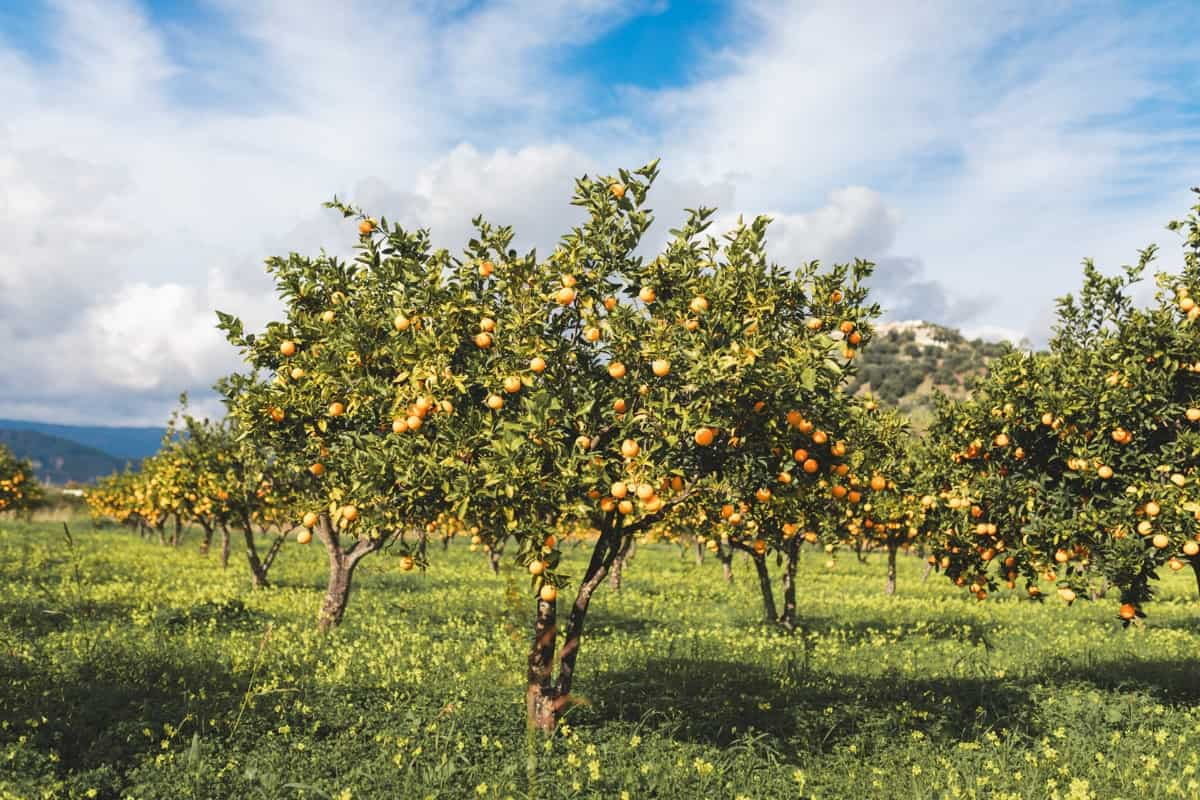Oranges are one of the most popular fruits consumed worldwide, with their sweet and tangy flavor making them a popular ingredient in various recipes. Orange farming is a lucrative business venture, especially in the USA, where oranges are grown in Florida, California, Arizona, and Texas.

In this detailed article, we will provide a step-by-step guide on how to start orange farming in the USA, covering everything from selecting the right location to marketing and sales. Below we learn Orange Farming Business Plan and a step-by-step guide to starting your Orange Farm in the USA.
How to Start Orange Farming in the USA
Right Location
Selecting the right location is crucial to the success of your orange farming venture. Oranges are typically grown in warm, subtropical climates, so choosing a location with a mild climate that ranges between 50 to 90 degrees Fahrenheit is important. The soil should also be well-drained, fertile, and have a pH between 5.5 and 7.5. Florida, California, Arizona, and Texas are the most popular states for orange farming in the USA.
Right Variety
Once you have selected the right location, the next step is choosing the right orange variety. There are several types of oranges, including Valencia, Navel, and Blood oranges. Each variety has its unique taste, appearance, and growing requirements. Selecting a variety that is well-suited for your location, soil type, and climate is essential.
Valencia oranges are the most commonly grown variety in the USA and are used for juice production. Navel oranges are another popular variety known for their sweet and seedless flesh. Blood oranges are a unique variety with distinct red flesh known for their rich flavor.
Prepare the Soil
Preparing the soil is a crucial step in orange farming. The soil should be tilled, and organic matter such as compost or manure should be added to improve soil fertility. The pH of the soil should also be adjusted to the appropriate range for growing oranges. The soil should be tested to determine the nutrient levels and necessary amendments.
Planting
Planting oranges should be done during the cooler months to allow the trees to establish their roots. The ideal time for planting is from November to March. The trees should be spaced at least 15 feet apart to allow enough space for them a tree to grow and produce fruit. It is also essential to support the tree using stakes or trellises to prevent damage from high winds or heavy fruit loads.
Irrigation
Oranges require consistent moisture throughout the growing season. Irrigation should be provided regularly to ensure that the trees receive enough water. Drip irrigation is the most efficient way to irrigate orange trees. It delivers water directly to the tree’s roots, reducing water loss due to evaporation.
Fertilization
Fertilization is essential for the growth and development of orange trees. A balanced fertilizer should be applied to the trees three times a year during the growing season. The fertilizer should contain nitrogen, phosphorus, potassium, and other essential micronutrients.
Pest and Disease Control
Orange trees are susceptible to pests and diseases that can significantly impact yield and quality. Monitoring the trees regularly for any signs of pests or diseases is essential. Appropriate control measures should be taken to prevent further damage, if any are detected.
In case you missed it: How to Start Pistachios Farming in the USA: A Step-By-Step Production Guide

Harvesting
Oranges are typically harvested from December to June, depending on the variety. The fruit should be allowed to ripen on the tree before harvesting. The oranges should be picked carefully to avoid damage to the fruit or tree.
Marketing and Sales
Marketing and sales are crucial to the success of any farming operation. Once the oranges are harvested, they can be sold to local markets, grocery stores, or consumers. Establishing a marketing plan and identifying potential customers before starting an orange farm is essential. Social media platforms, online marketplaces, and local farmers’ markets can be great places to start marketing your oranges.
Maintenance
Maintaining the health of the orange trees is crucial to ensure a bountiful harvest. The trees should be pruned regularly to remove dead or damaged branches and maintain the tree’s shape. Mulching around the tree’s base can help retain moisture and reduce weed growth.
Monitoring the soil moisture levels and adjusting irrigation accordingly is also important. Additionally, regular soil testing should be performed to ensure that the soil nutrient levels are adequate for the orange trees.
Consider Organic Farming Practices
Many consumers are increasingly interested in organic produce. If you are interested in organic farming practices, following the guidelines set by the USDA’s National Organic Program is essential. This includes using organic fertilizers, pesticides, and herbicides and following specific crop rotation practices.
Seek Expert Advice
Starting an orange farm can be a significant investment, both in terms of time and resources. Seeking advice from experts in the field can help you avoid common mistakes and improve the success of your orange farming venture. Consider consulting with local agriculture extension offices, agricultural universities, or experienced orange farmers in your area.
In case you missed it: How to Start Pork/Hog/Pig Farming in the USA: Business Plan and Step-By-Step Guide for Beginners

Conclusion
Starting an orange farm in the USA can be profitable if done correctly. By following these steps, you can start your orange farm and produce high-quality oranges that meet the demands of consumers across the country.
- Feed Your Flock for Less: Top 10 Tips to Save on Chicken Feed
- Ultimate Guide to Ossabaw Island Hog: Breeding, Raising, Diet, and Care
- Hatching Answers: The Top 10 Reasons Your Chickens Aren’t Laying Eggs
- Eggs and Economics: Breaking Down the Cost of Raising Backyard Chickens
- Defend Your Greens: Proven Methods to Keep Iguanas Out of Your Garden
- Ultimate Guide to Cinnamon Queen Chicken: A Comprehensive Guide for Beginners
- Ultimate Guide to California Tan Chicken: Breeding, Raising, Diet, Egg-Production and Care
- Ultimate Guide to Marsh Daisy Chicken: Breeding, Raising, Diet, and Care
- 10 Types of Chicken Farming Businesses You Can Start for Profits